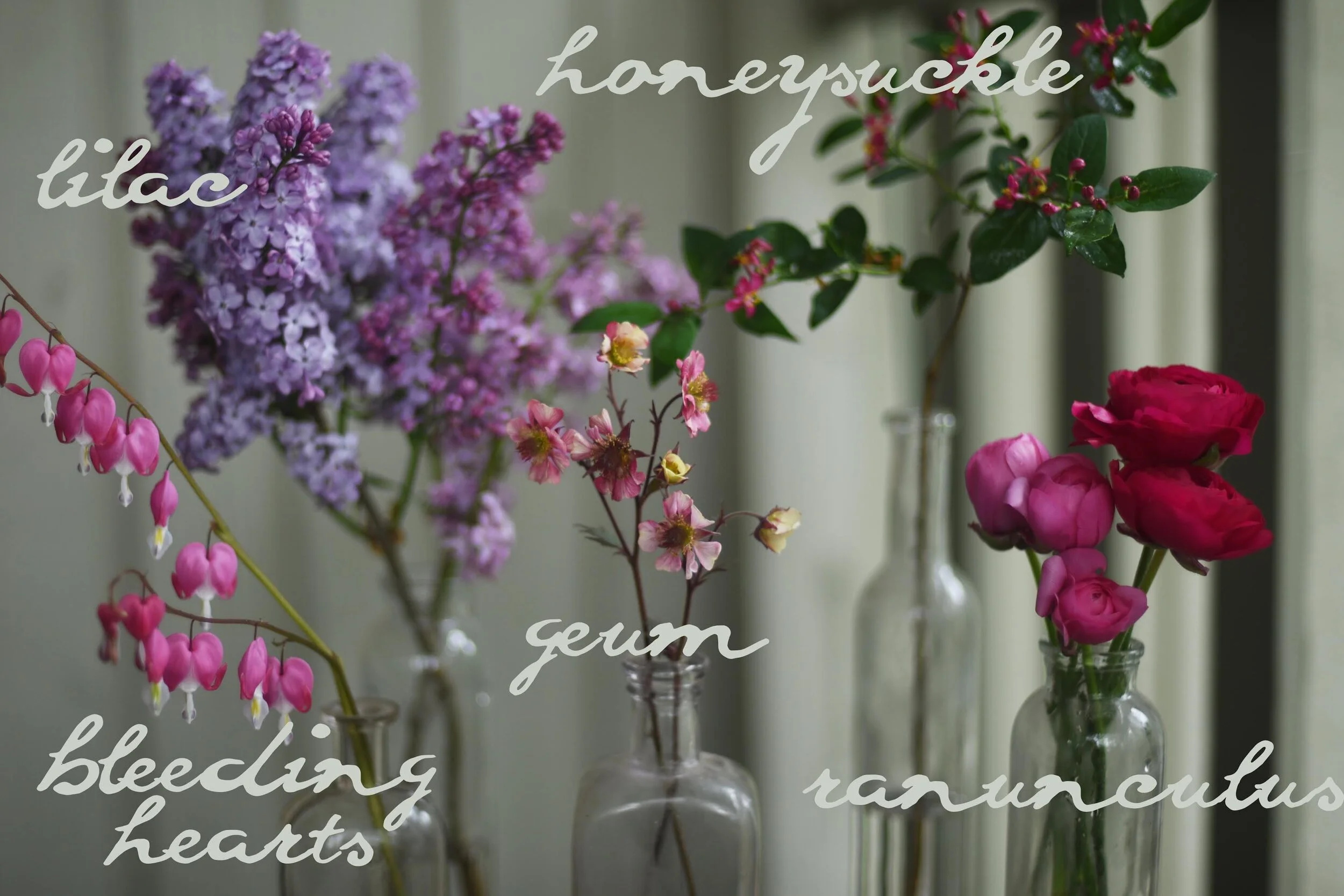Lilac Arrangement Tutorial | Spokane Florist
Lilacs are my very favorite flower, and for a florist…it’s hard to make the claim that you truly have ONE favorite. But I do, I simply adore lilacs. They’re the star of this sweet little tin can arrangement.
I have only five ingredients for you today and if you’re missing any of them in your garden, think of something that would be a similar size/shape. Like a peony tulip could be a great replacement for the ranunculus or a columbine bloom to replace the geum.
Step 1 & 2 Start by arranging your lilac stems into a shape that you’d like for your base. Next you’re going to add in your honeysuckle stems. I originally placed them in with their leaves and then decided that I didn’t like having any greenery in this particular arrangement so I stripped the leaves off and left just the tiny little blooms.
Step 3 Place your ranunculus sporadically about your arrangement, remembering to give each one the slightest bit of space from the blooms behind it’s back so that your arrangement doesn’t become a tightly packed cluster but rather remains loose and effortless looking.
Step 4 Bleeding hearts are recognizable to most people and so they tend to incite a fun reaction from the bouquet recipient They are playful and add a bit of whimsy but can be tricky to place. They need room to dangle those charming little hearts without smashing in to other blooms but they can also end up looking like antennae if they are sticking out all over. My suggestion is to find a void between the larger lilac blooms and let them “hang out” in there.
Step 5 The finishing touch for this arrangement is geum. These sweet little blooms have stolen my heart. I have a soft spot for any perennials that help fill my cutting garden early in the season but these guys are especially useful. They are tiny individually which makes them a nice finishing touch but can give a little heavier weight to your arrangement if you place them in clusters like i did here. They also are are a wonderful bridge between colors because of the gradient of tones painted on their petals.
I’d love to know if these tutorials are fun and or helpful. Give me some feedback below or by sharing this post to social media/pinning to Pinterest. Thanks!







